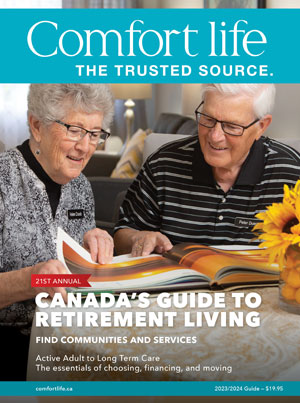As you consider communities, here's a list of things to think about with respect to any specific community or to a variety of options you may be considering, in adult lifestyle.
Are there reviews of the community that I can consult? Find out all you can about what residents say about the community.
What can you find out about the Home Owners Association and other local "politics"? Get to know all you can about the community's leadership, and the personalities who run the show. The Home Owner's Organization might also be called a variety of other things, including the Owners’ Council and other names. Ideally the organization will encourage input from everyone in the development, and if you are so inclined, you should feel welcome to partake, and voice opinions and ideas.
What is the history of the community? Learn all you can about the reputation of the builder, of the community's ownership and the history of ownership of the community. It may have changed hands in the past, and there may be interesting reasons for ownership changes.
What are the neighbours like? Of course you want to know this, the same as you would when moving into any neighbourhood. You can't assume that everyone is perfect or just like you, of course, so be sure to learn all you can. You may even find out very good news, that they are not around much (travelers, perhaps) or they are just plain excellent people.
Has it been maintained well? Look at the age of the buildings and/or homes. Active adult communities come in a wide variety. In some cases, you may be fortunate to be moving into a phased development, where you can see how previous phases have turned out. Most often, communities will heavily promote new developments, some of which you will find on this page.
What are membership expectations? Make sure you fully understand membership in the community, especially all fees and dues you will be expected to pay. Different communities use very different terminology and have very different rules concerning membership and ownership stakes. Some charge annual dues, others monthly fees, and there are variations in ownership arrangements. Question the selling agent so you fully understand all fees and costs. If you know someone in the community, learn what you can from them about all costs they pay.
What are the maintenance fees? (And what is covered under those?) Most active living communities will have onsite staff whose income is covered under maintenance fees paid by homeowners. Even in communities where you own your own home, you will likely pay extra for community services ranging from dining to golf and other features and amenities described. Get the sales rep to fully inform you about community fees, packages and options offered and what fee structure is right for you. Ask also about the history (if there is any) of increases in fees and reasons for increases.
What services (e.g. laundry) or maintenance is included? Look over the list to make sure that all services and amenities the community offers appeal to you. Make sure you understand about any additional fees for specific classes or activities.
What is the broader area like? For example, are there local medical care services? What are some local activities you want to take part in? Is there enough shopping and other conveniences nearby?
How do you feel about the community's pet policies? Depending on your personal preferences you may or may not want strict rules.
How much staff is onsite? You want to consider the value of services, as you think about this. Some communities have an abundance of staff and services offered. Some examples of titles we have seen include Master Chef, Lead Golf Professional, Head and Associate Concierge and more. Getting a list of staff gives you an idea of what services you are paying for (which can vary widely from one community to the next).
Get a full list of all the property rules, and rules covering all onsite facilities, just for your peace of mind.







